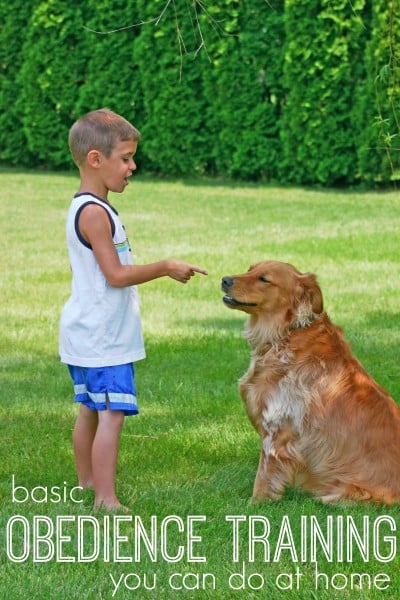The Basics of Dog Obedience Training
Every pet owner should teach their dogs at least a few basic commands and use them on a regular basis. Making your dog sit quietly before meals, when children are around or just for fun are great tools to have to help control your pet since we can’t talk to them and tell them what we need from them. We’ve got the basics of dog obedience training to get you started.
Tools for training
- Treats: go for smelly, soft, tiny pea-sized treats like these. The size is great for training because they don’t take your dog long to eat and you can move on quickly.
- Treat Pouch: you can keep treats in your pocket, but it gets a little messy and you’re going to end up smelling like treats all day. This one is great because it clips to your belt or pocket.
Tips before you begin
- Keep training sessions short, maybe 5-15 minutes so your dog doesn’t get bored and restless
- Stay positive! Do NOT punish or get frustrated with your dog if they don’t get it right away. You want your dog to look forward to training sessions. If you start to get angry or frustrated end the session and try again later.
- Try not to use a voice command at first, saying “sit” a million times when he doesn’t know what that means will just cause him to ignore that command. Once you have the hand gesture down then you can add a voice command to it. But again, avoid saying it over and over and over. If they aren’t doing it they either don’t understand the command or are too distracted.
“Watch Me”
One thing I recommend is to teach a dog to pay attention to you. This command basically says, “Hey, look at me, I’m going to give you a command”.
To start call your dog over, as soon as he looks at you, say “good, watch me” and give him a treat. That’s basic idea. You can do this randomly throughout the day and have a quick 5 minute session where anytime he looks at you, you say “good, watch me” and he gets a treat. Soon you should be able to call your dog over say “watch me” and have him know to look at you, even if there are some distractions around.
“Sit”
A basic command is the “sit” command. To train your dog to do this, have a treat between your thumb and fingers so your dog can see and smell it. Then slowly guide your dog into a sitting position by moving your hand over to your dogs nose and then up, kind of in a swooping motion. You might have to go slowly, let you dog sniff the treat and then move your hand up over their head. Naturally, most dogs will sit so that they can lift their nose higher. You might have to do this a few times, but eventually your dog will get it.
“Down”
To train a dog “down”, put them in a “sit” first. Take a treat between your fingers and hold it in front of the dogs nose then slowly bend down, pulling your hand (and the treat) down to the ground. Your dogs nose will follow and he might lie down right away.
If he doesn’t lie down try twisting your wrist with the treat so the back of your hand is blocking the dog’s nose from the treat. Most dogs will try to reach around with their noises. Another trick is to slowly pull your hand towards you (still on the ground) so the dog will lie down to get closer to it.
If your dog gets up to get the treat when you pull away, that’s fine. Don’t give him a treat, put him into a sit and try again. You’ll eventually figure out what works to get your dog into a down position.
Once your dog gets the idea you won’t have to bend down and eventually you’ll just be able to point down and your dog will understand that signal.
“Stay”
The best way to train your dog to stay is to have him in a “down” because he’s less likely to get up.
While your dog is lying down, put your hand up as if to say “stop” and take a few steps back. If he doesn’t get up, walk back to him and give him a treat. As your dog gets good at this you can move farther and farther away, turn your back or even leave the room.
When you want to release your dog just walk back over and say “ok” to let him know he can get up.
About the Author: Aileen is a wife, entrepreneur and animal lover. She lives in a small California town, with her husband and a handful of pets, where she spends her days doing freelance blog design. You can find more at Life by Aileen where she talks about chasing dreams and her attempts at a simpler life or follow along on Facebook, Instagram, Twitter or Pinterest.








